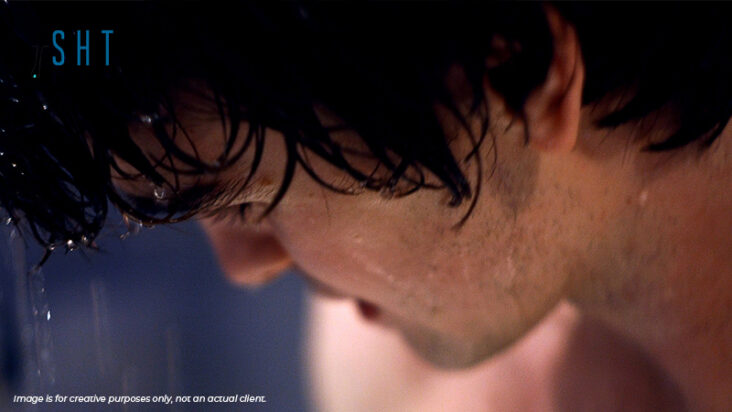Is your hairline starting to look like a shoreline with an incoming low tide? If the amount of hair loss is getting obvious by the day, it is wise to act on it now if you plan to manage its progression. There are several receding hairline treatments that are available for you to use at present, all with their own approach to control excessive shedding and restore hair volume.
If you are looking for a way to address your follicular dilemma, then you must read this.
Hair Loss Facts
Hair loss doesn’t necessarily mean that you are experiencing a medical crisis. It is normal for us to lose hair every day. However, we don’t lose them in clumps, rather, we only shed around 50-100 hair strands each day. That may sound like a lot, but you’ll hardly even notice this at all. It’ s only when there is significant hair loss that it becomes apparent that hair density is thinning out, or it may be your hairline starting to recede.
https://www.youtube.com/watch?v=8diYLhl8bWU
Excessive hair loss is a multifactorial phenomenon. It could potentially stem from genetics, stress, medications, or certain conditions. In men, the usual culprit behind the problem is embedded in their DNA which results in a condition referred to as male androgenetic alopecia. This is true not only in older gentlemen, but even for younger men as well.
Androgenetic alopecia or male pattern baldness is caused by a hormone which triggers hair thinning and shedding. In some men, it may start in the middle portion of the scalp while it slowly increases in diameter. For others, it can start at the frontal hairline and it recedes backward.

Receding Hairline Treatments
Propecia

Finasteride (Propecia) is an FDA-approved first-line treatment for male androgenetic alopecia. Originally indicated for enlarged prostates, also known as benign prostatic hyperplasia (BPH), it was later discovered that it can also trigger hair growth. However, it is only possible by using a fifth of the dose prescribed for prostate enlargement. The medication has shown reliable results in halting receding hairlines and restoring hair density.
Originally indicated for benign prostatic hyperplasia (BPH), it was later discovered that Finasteride can also trigger hair growth.
However, the success is marred with threats of impotence, sexual dysfunction, and other untoward side effects. It may be able to save your locks, but it can also adversely affect your libido. Concern stems from the fact that medications must be taken regularly to maintain results. It has been reported that it is with long-term use that sexual side effects occur.
Today, Propecia is still considered a safe and well-tolerated medication. Researchers are still pushing for further research to extensively evaluate if there are any unique characteristics that are present in affected individuals suffering from prolonged sexual dysfunction, and even depression, after using Propecia.
This potential side effect is an important matter for discussion between you and your doctor before treatment is started so you can be guided accordingly. Men with a history of oligospermia (low sperm count) or infertility are advised to avoid the drug, especially if you are planning to start a family soon.
Minoxidil

Minoxidil is also a recognized treatment for a receding hairline or male pattern baldness. Originally used to treat hypertension, it was also observed that one of its side effects is increased hair growth. While this response is not fully understood, researchers believe that it stimulates blood flow and oxygen to the hair follicles that encourages hair to grow. Eventually, these results earned Minoxidil an FDA approval for male androgenetic alopecia.
Minoxidil is a topical treatment against receding hairlines or male pattern baldness.
Topical Minoxidil has been proven to be an effective treatment for hair loss; taking around six months to see results. However, the major factor to take into consideration when using minoxidil is your commitment to the product. It is best applied twice a day and it must be taken religiously otherwise its effects will revert if discontinued.
Proper application is also essential to ensure that it is thoroughly applied to the scalp. It must be sufficiently absorbed to deliver the treatment down to the hair follicles where it is needed the most. Make sure that your hair and scalp is cleaned thoroughly and dried prior to application. A clarifying shampoo helps remove buildup from excess oils and styling products.
The problem with minoxidil is that alcohol is the ingredient which allows the medication to penetrate the scalp. Alcohol-based products can dry the skin and scalp resulting in dandruff. You may need to use an anti-dandruff shampoo to counter this problem.
Corticosteroid

This treatment is generally recommended for the treatment of alopecia areata as well as other severe forms such as alopecia totalis and alopecia universalis. This medication comes in injectable, topical or oral form with an aim to prevent the immune system from attacking the hair follicles and encourage hair regrowth in patients suffering from alopecia.
Corticosteroid prevents the immune system from attacking the hair follicles and cause hair loss.
Steroid injections are best used on small patches of hair loss. The treatment may involve having several injections to deliver the solution directly to the scalp. This is also its drawback because patients must be subjected to it every few months as it is required in the administration of this drug.
Topical steroids on the other hand are applied directly on the scalp surface. It is sold as a lotion, gel, or foam. This is an easier means of application with the type of corticosteroids delivered including, betamethasone, mometasone, and hydrocortisone. While they are convenient, it is important that a patient be mindful of the associated side effects with prolonged use, such as acne and thinning of the skin.
Steroid tablets are no longer recommended for the treatment alopecia because it was found that they pose serious side effects such as stomach ulcers and diabetes.
Laser Treatment

One of the hair loss treatments that is slowly making a mark in the market today is low-level laser hair treatment. With the movement towards non-invasive options, it’s no surprise that laser is gaining favor in a lot of hair loss victims. But how effective is it in delivering its promised results?
Low-level laser helps stimulate hair growth and it can also be an adjunct therapy to other hair loss treatments.
The use of laser in hair restoration should be taken with a grain of salt because it is not a definitive or a miracle treatment. There are several factors that must be taken into consideration such as the extent of hair loss, the treatment that it is concurrently used with, and the type of hair loss that you are suffering from.
In a recent study, it was shown that laser treatment created a significant improvement in patients with androgenetic alopecia (male pattern baldness). With some slight variety in data, some studies showed that low-level laser treatment is effective when combined with topical minoxidil. However, when compared to the results of a hair transplant, the latter provides a faster and more dramatic change.
Hair Transplant

A hair transplant procedure is considered the last resort in hair restoration because of its invasive nature. It is for this reason and the accompanying cost that makes proper advice and planning is necessary to ensure positive results.
Surgical hair restoration comes in two different approaches, the Follicular Unit Transplantation (FUT) and Follicular Unit Extraction (FUE). FUT is the traditional method which involves the creation of a linear incision that runs across the back of the scalp to remove a piece of the scalp containing the donor hairs. Meanwhile, the FUE method is less invasive because it only involves the removal of the donor grafts directly on the scalp using a special tool. It is less traumatic to the scalp and it doesn’t result in obvious scars, however it may be pricier.
Proper advice and planning are necessary to help ensure a positive outcome with Hair Transplant surgery.
Hair transplant price vary for each individual, and it depends on the following:
- The area of hair loss that must be covered
- The type of technique used
- The country, region, or clinic where you will have your hair transplant done
- The doctor who performs the procedure
- The type of procedure (whether if it is a primary procedure or a repair)
Hair transplant surgery has been hailed a reliable solution in restoring hair loss. It may come with risks inherent to its surgical nature, but this can be significantly lessened when you have it done by reputable and certified surgeons. It gives you the volume and coverage that comes out natural-looking. Therefore, despite its cost, many are considering this treatment.
Start by getting the help that you need today from someone who is on the same page as you. Book your consultation today and ask Dr Daood of the Sydney Hair Transplant Clinic your burning hair transplant questions.


